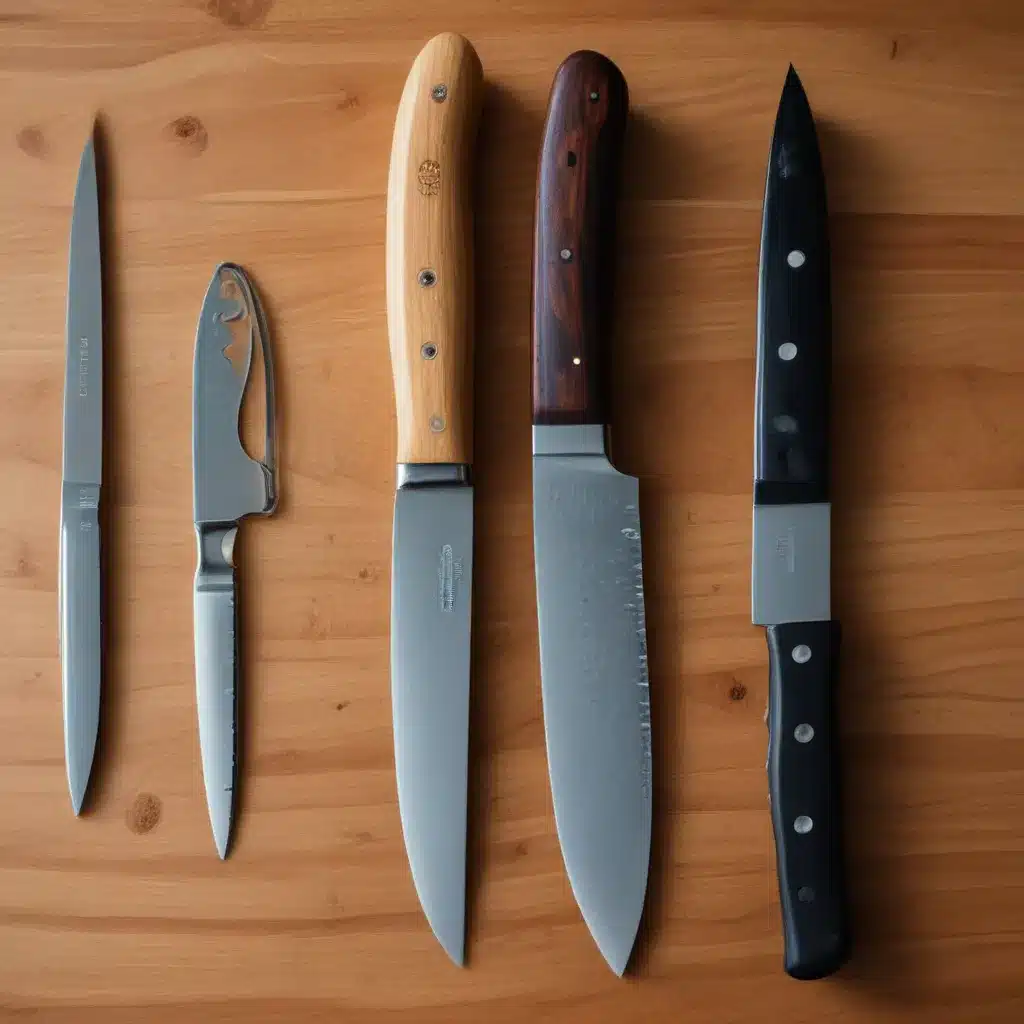
Mastering the art of cutting, slicing, and dicing is a fundamental skill that every home cook should strive to develop. Your choice of knives and how you handle them can make or break a dish, transforming your cooking experience from a frustrating chore to a rewarding, efficient, and even enjoyable process. In this comprehensive guide, we’ll explore the essential knife skills that will elevate your kitchen prowess and help you become a true culinary warrior.
The Importance of Proper Knife Skills
Whether you’re a seasoned home chef or just starting your cooking journey, honing your knife skills is crucial for several reasons:
-
Efficiency and Time-Saving: Proper knife techniques allow you to work quickly and effortlessly in the kitchen, reducing prep time and enabling you to focus on the actual cooking process.
-
Improved Cooking Results: Well-executed knife skills ensure consistent, uniform cuts, which translate to even cooking and better texture and flavor in your dishes.
-
Safety and Injury Prevention: Knowing how to grip, control, and maneuver your knives properly can help you avoid painful accidents and ensure a safe, comfortable cooking experience.
-
Elevated Presentation: Neatly and precisely cut ingredients can dramatically improve the visual appeal of your dishes, elevating your overall culinary presentation.
Essential Knife Skills to Master
To become a true kitchen warrior, let’s dive into the fundamental knife skills every home cook should know and practice:
1. The Chef’s Grip
The chef’s grip, also known as the “claw” grip, is the most common and versatile way to hold a chef’s knife. To perform the chef’s grip:
- Place your thumb and forefinger on either side of the blade, just behind the bolster (the thick part where the blade meets the handle).
- Curl your remaining fingers around the handle, keeping your knuckles tucked under and your fingertips curled in to create a “claw” shape.
- This grip provides stability, control, and precision when slicing, dicing, or mincing.
2. The Rocking Technique
The rocking technique is a efficient way to mince herbs, garlic, or other small ingredients. To use the rocking technique:
- Place the tip of the knife on the cutting board, keeping the blade flat.
- Gently rock the knife back and forth, using the full length of the blade to finely chop the ingredients.
- Maintain a consistent, gentle rocking motion, being careful not to lift the blade completely off the board.
3. The Slice and Dice
Slicing and dicing are fundamental cutting techniques that every home cook should master. To slice and dice:
- For slicing, place the ingredient on the cutting board and use a smooth, continuous motion to cut evenly thick slices.
- For dicing, first slice the ingredient into thin strips, then stack the strips and cut across them to create small, uniform cubes.
- Maintain a steady, controlled grip on the knife and use your free hand to guide the ingredient, keeping your fingertips curled under for safety.
4. The Julienne Cut
The julienne cut, also known as the “matchstick” cut, is a precise technique for cutting ingredients into thin, evenly sized strips. To create a julienne cut:
- Slice the ingredient into thin, even slices.
- Stack the slices and cut them lengthwise into thin, matchstick-like strips.
- This technique works well for vegetables like carrots, zucchini, or bell peppers, and can add a beautiful, uniform presentation to your dishes.
5. The Chiffonade
The chiffonade technique is a specialized method for finely slicing herbs, leafy greens, or cabbage. To create a chiffonade:
- Stack the leaves and roll them tightly into a cylinder.
- Using a sharp knife, make thin, even slices across the cylinder to create delicate, ribbon-like strips.
- This technique helps preserve the flavors and delicate textures of the herbs or greens.
6. The Honing and Sharpening
Keeping your knives sharp and well-maintained is essential for precise, efficient cutting. To ensure your knives are in peak condition:
- Use a honing steel regularly to realign the blade’s edge and maintain sharpness between uses.
- Sharpen your knives periodically using a sharpening stone or electric sharpener to restore the blade’s cutting edge.
- Proper honing and sharpening will extend the lifespan of your knives and make cutting tasks much easier and safer.
Mastering Knife Skills: Tips and Techniques
To help you on your journey to becoming a true kitchen warrior, here are some additional tips and techniques to keep in mind:
-
Choose the Right Knife for the Task: Invest in a high-quality chef’s knife, paring knife, and serrated knife, as these will be your most-used tools in the kitchen.
-
Practice, Practice, Practice: The more you use your knives, the more comfortable and skilled you’ll become. Dedicate time to honing your techniques through regular cooking sessions.
-
Maintain Proper Posture and Grip: Stand with your feet shoulder-width apart, keep your elbows close to your body, and maintain a firm, secure grip on the knife.
-
Observe Safety Precautions: Always keep your fingers curled under and your eyes on the blade. Use a cutting board and never try to catch a falling knife.
-
Experiment with New Ingredients: Challenge yourself by mastering knife skills on a variety of ingredients, from delicate herbs to tough root vegetables.
-
Stay Sharp: Regularly hone and sharpen your knives to ensure optimal performance and safety.
By incorporating these essential knife skills into your cooking routine, you’ll not only become a more efficient and confident home cook but also elevate the overall quality and presentation of your culinary creations. Remember, mastering knife skills is a journey, so be patient, persistent, and above all, embrace the process of becoming a true kitchen warrior.
To learn more about essential cooking techniques and tools, be sure to explore the wealth of resources available on Kitchen Warrior. Happy cooking!


